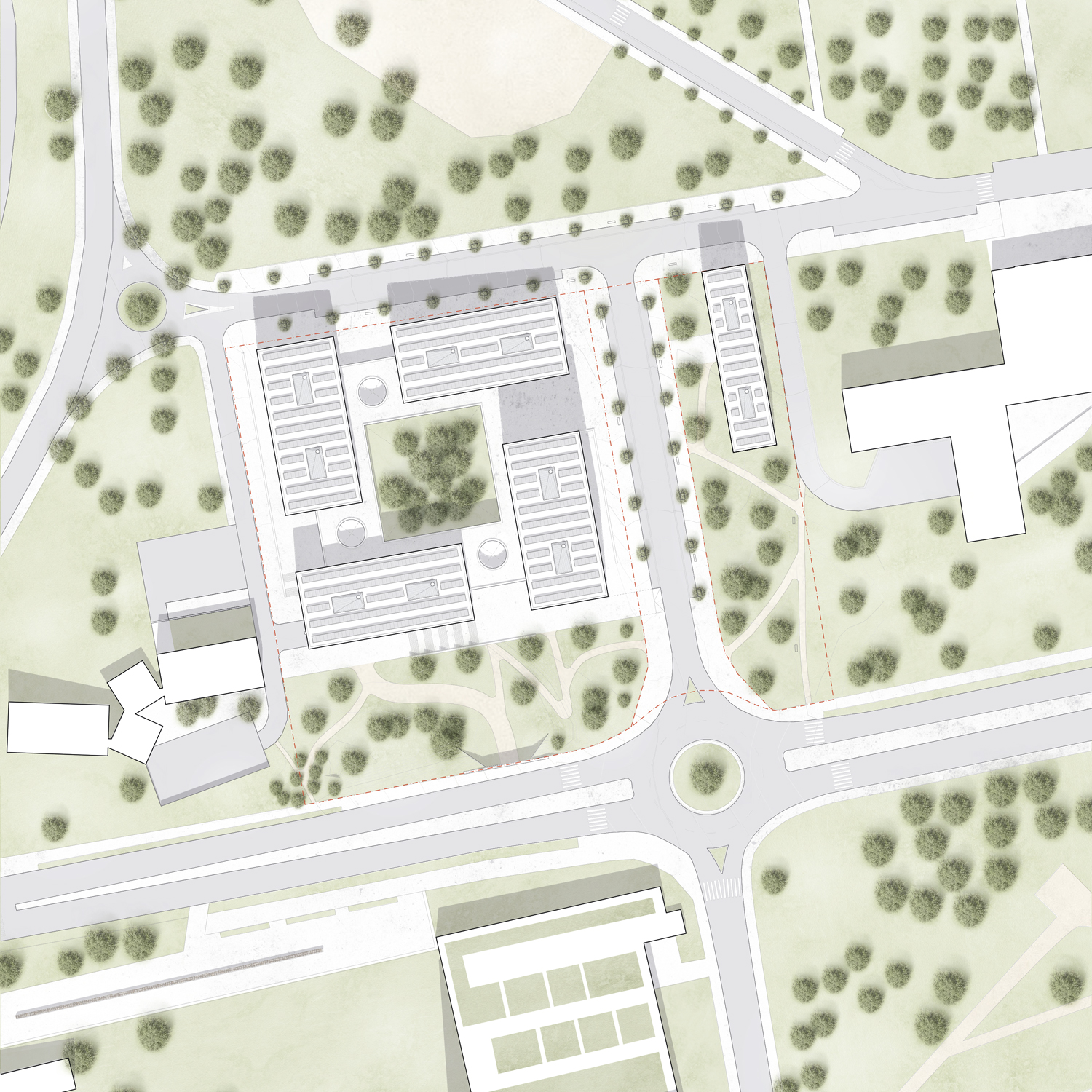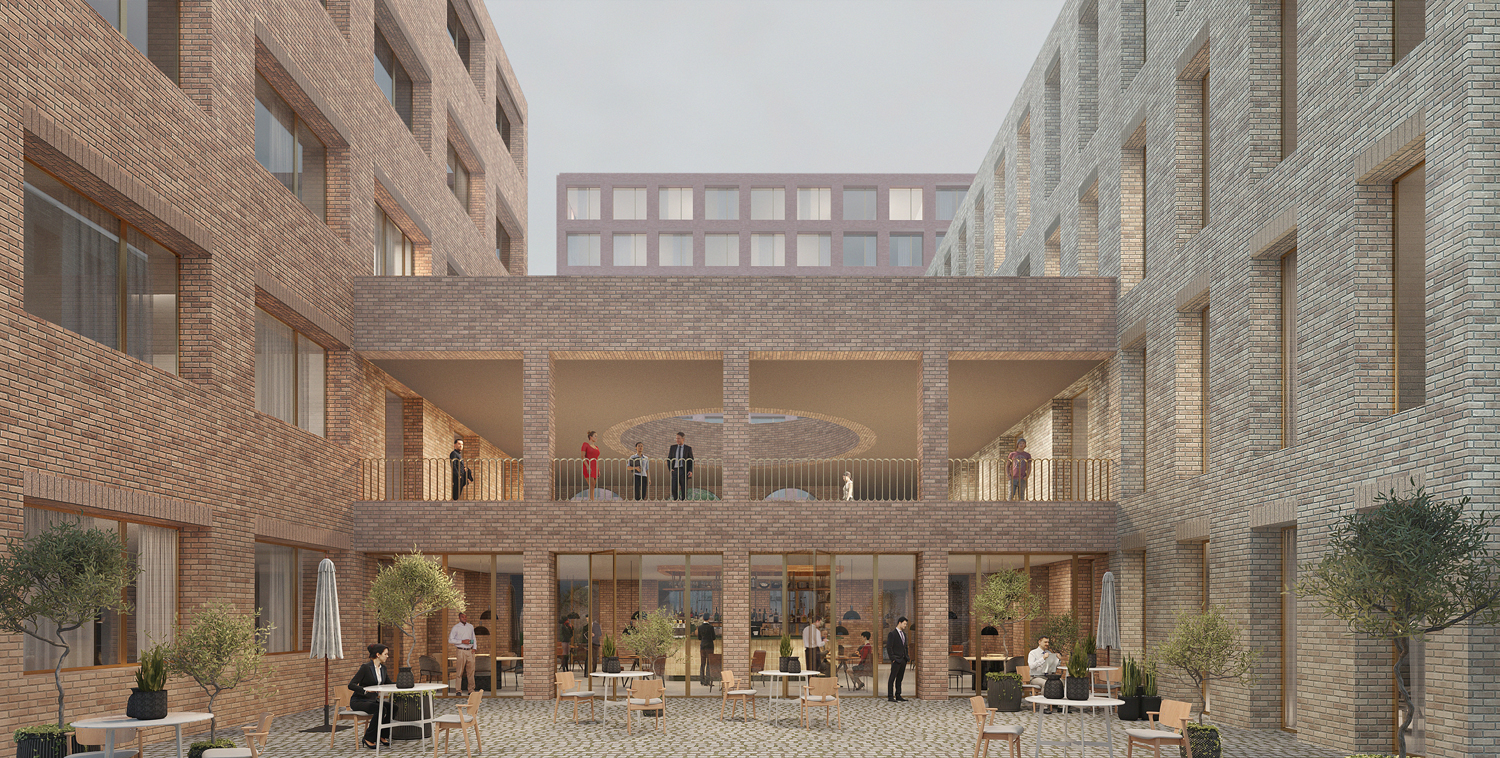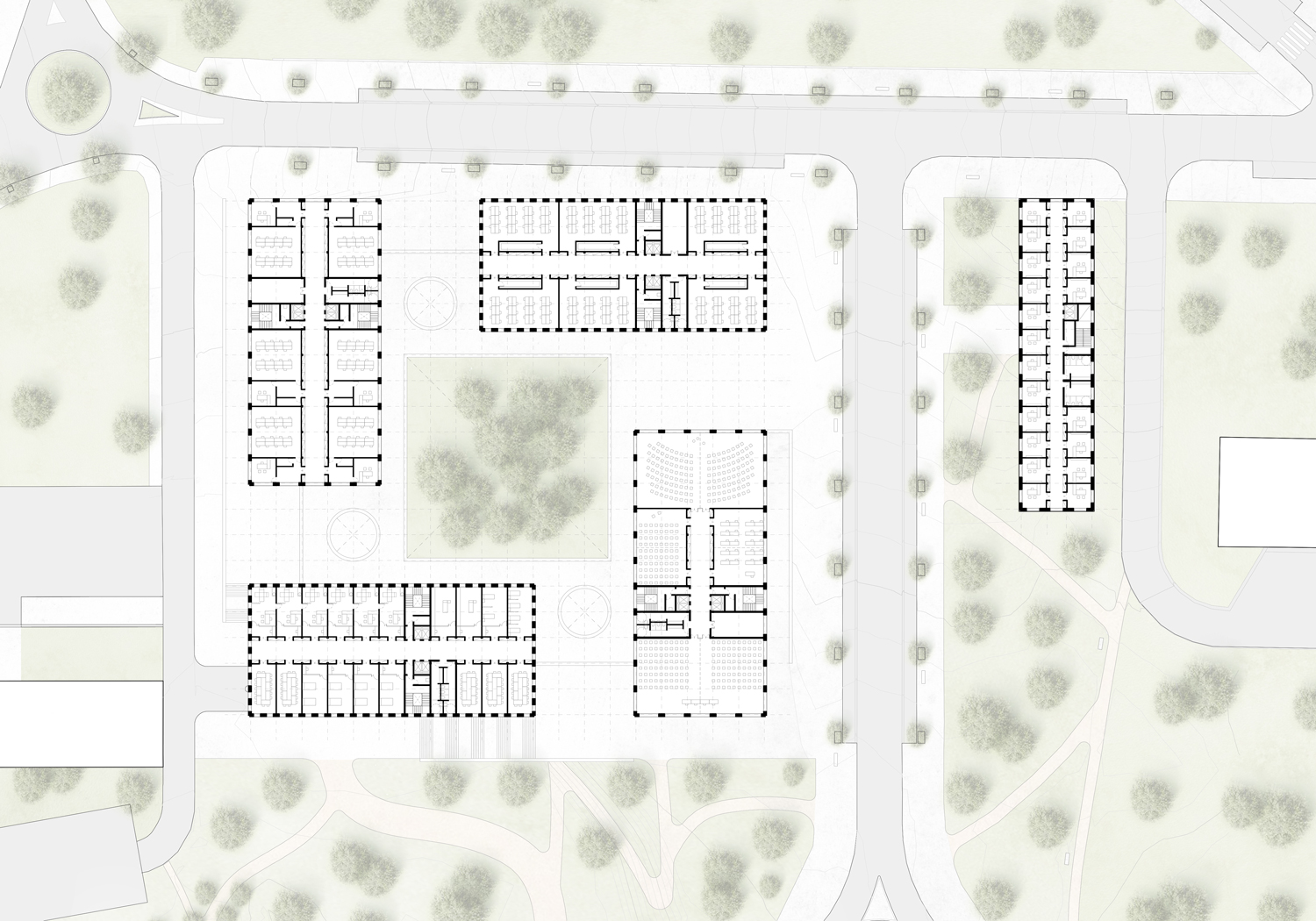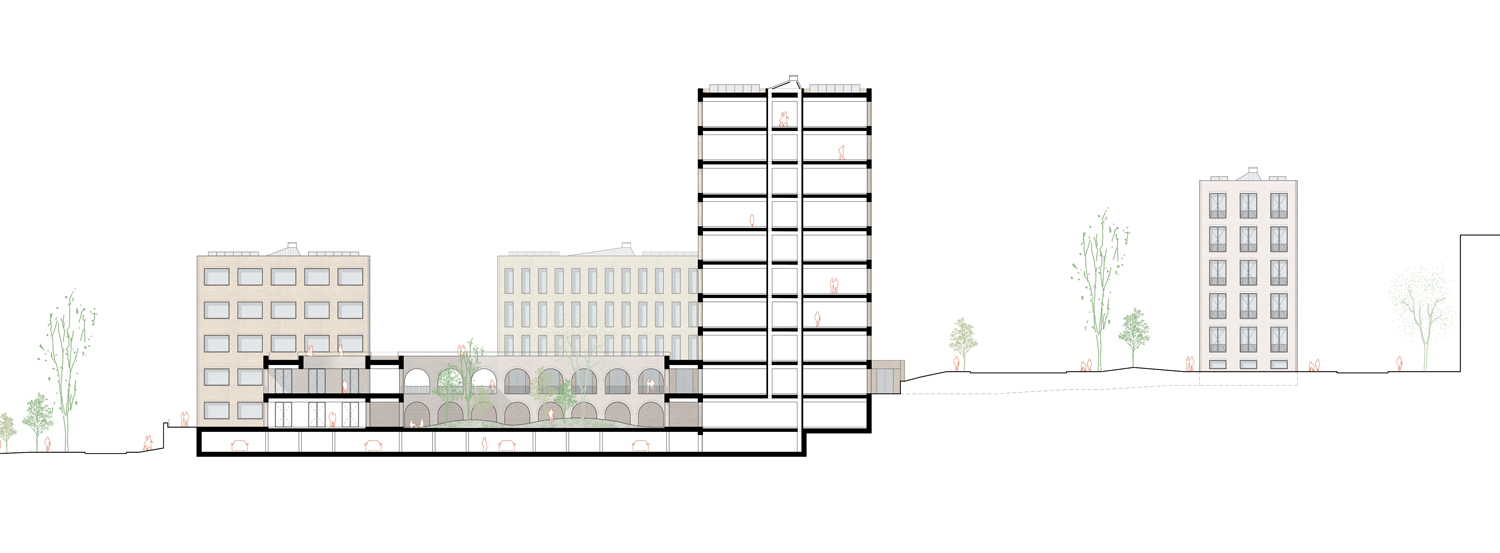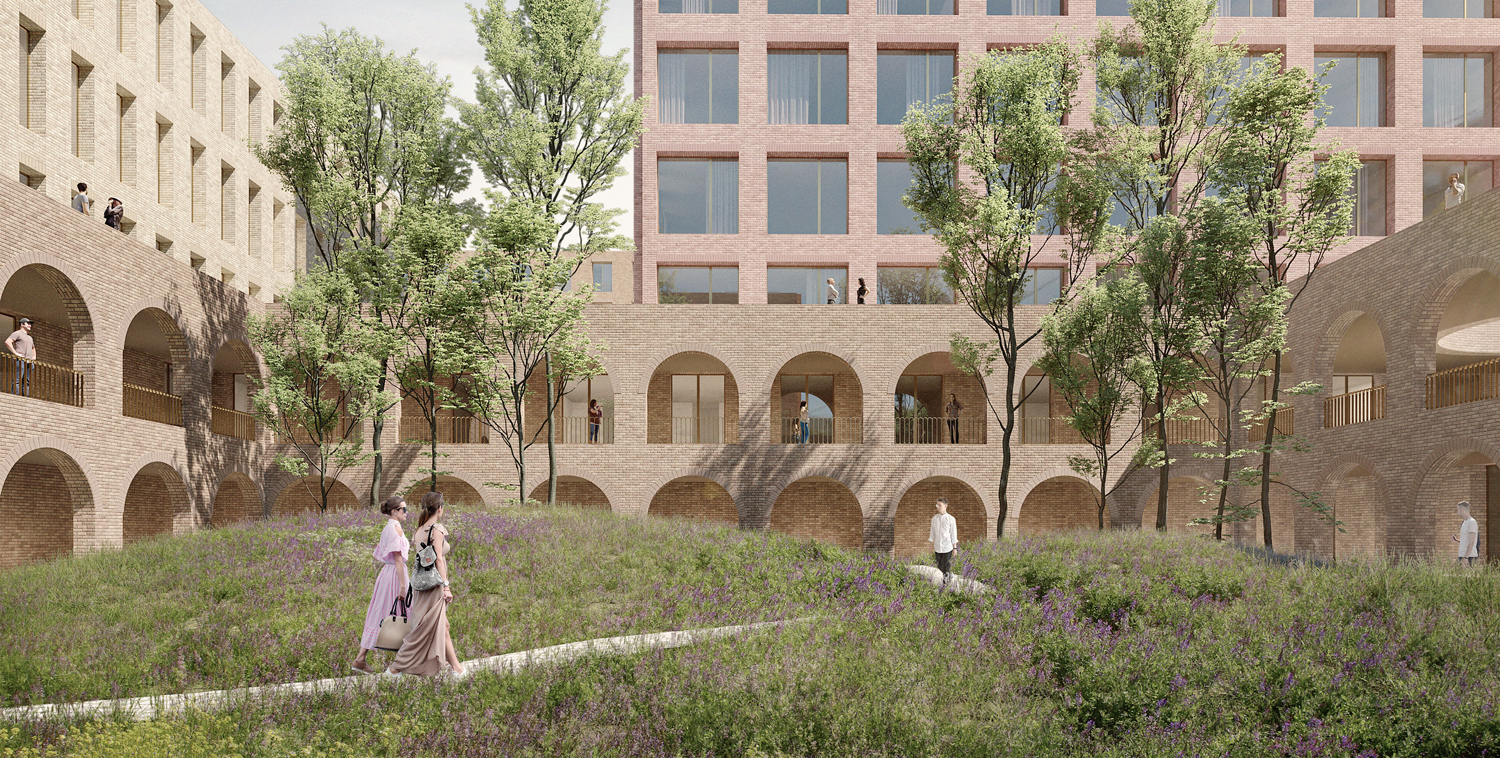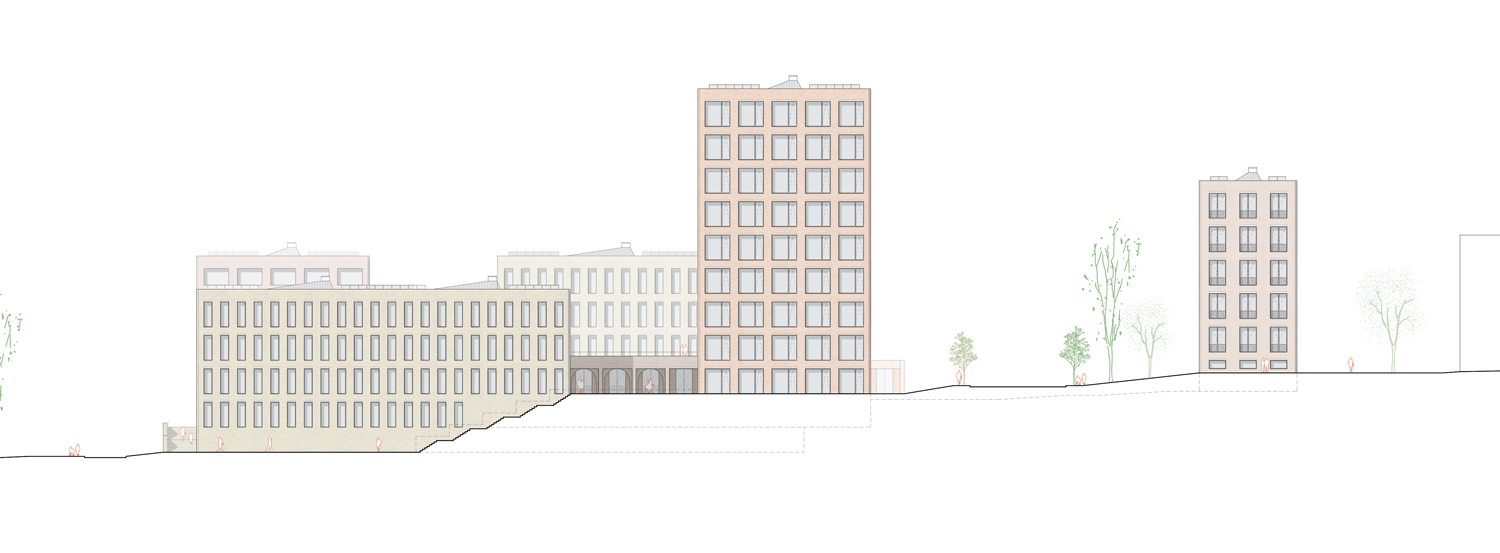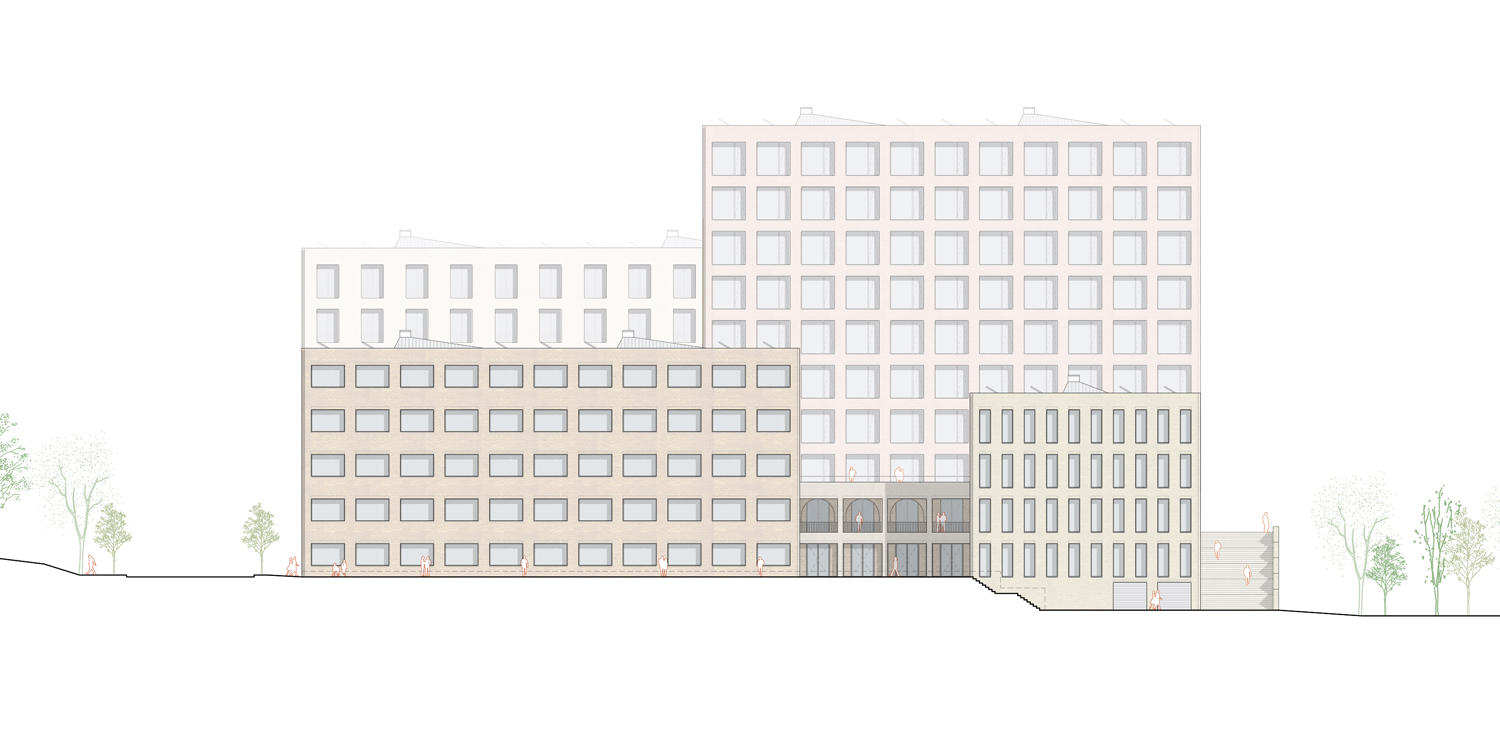2984-STP-SCQ.ES-2022
Client: University of Santiago de Compostela
Status: Competition (2022)
Location: Santiago de Compostela, Spain
Climate: Oceanic / maritime, Temperate
Material: Brick
Environment: Industrial
Visualizer: ZIR Visual
Scale: 28.164 ㎡ Large
Types: Education, Healthcare, Hospital, Research center
The new USC Health Sciences Center is structured as a series of buildings of different uses that rise on a unifying socle that houses all the common spaces. The complex is organized around a large central cloister that pierces the base and serves as the main space for interaction, while linking it with the architectural tradition of the University of Santiago de Compostela.
Its design is guided by criteria of programmatic versatility and clarity, environmental sustainability and responsible consumption of natural and energy resources.
In relation to programmatic versatility, the complex offers a modular structure of recycled concrete with 4 m spans that allows for easy compartmentalization of the interior space. Each building has a central spine that joins the circulation and MEP spaces. In this way, the internal distribution of the spaces on both sides of the central spine can be easily modified, always having direct access to the specialized facilities for the technical laboratory programs and their auxiliary spaces. From the basic module, spaces can be combined to generate rooms of any size or nature as the Center’s needs change over time in response to new teaching programs or fluctuations in the number of students and staff.
The recycled concrete grid structure is enclosed by ceramic brick facades, which offer an economical, durable and low-maintenance solution. The brick has a high thermal inertia, softening the interior temperature of the building in both winter and summer, and consequently reducing mechanical air conditioning loads and energy consumption.
The Center also has an extensive system of photovoltaic solar panels, capable of supplying the complex’s heat pumps. It also has a rainwater collection system, which is reused in toilets and for watering the outdoor green spaces. Finally, each building has two solar chimneys on its roof, which generate a natural cross ventilation movement of all interior rooms, reducing the need for mechanical ventilation.
In this way, the new USC Health Sciences Center materializes as a complex guided by formal clarity and programmatic versatility, qualities that prevent its obsolescence in the future, as well as a sustainable building with minimum air conditioning and ventilation loads, and optimal consumption of natural resources.

